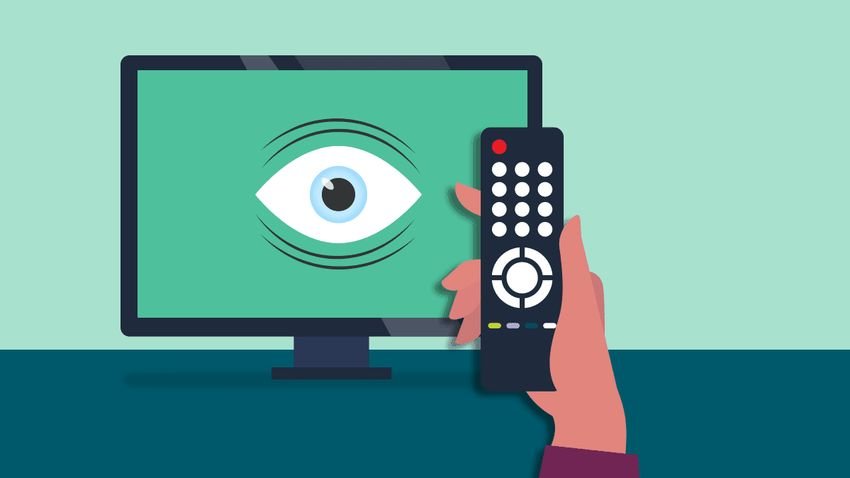See how to properly and safely clean your computer screen, your TV and generally any device screen.

There is definitely a wrong way to clean it screen your. Do that and you'll see scratches, smudges, smudges, and for a long time. Do the following and you'll have a screen that shines like the day you bought it.
We give you 5 tips for the proper cleaning of any screen, whether it is integrated on a device (eg mobile phone), or as a separate standalone accessory (computer screen, TV, etc.). Let's go see them.
1. Consult the manufacturer's instructions

The manufacturer of your TV or monitor will likely have its own set of cleaning instructions for your particular type of monitor. This applies to all monitors such as OLED, TFT, IPS, LED etc.
Although the manufacturers' guides are often incomplete and recommend minimal cleaning products, you can find the type of panel your screen carries and based on that you can find specific tips for that particular screen and the types of coatings used on it.
Some manufacturers, such as Dell, recommend 70-90% isopropyl alcohol in some of their products. Others, such as LG, recommend that you never wet the screen. If your monitor is still under warranty, it may be best to follow these instructions faithfully to avoid any problems if you need to make a claim later.
2. Avoid harsh cleaning chemicals

The most important thing to remember is to avoid any harsh cleaning chemicals, including cleaning glasses like Ajax, Cif, Windex if you are in America, various polishes, even isopropyl alcohol, unless you have a specific recommendation from the manufacturer that this will not damage the screen.
Such cleaning products are usually made with ammonia, alcohol and contain other products and fragrances that could damage your screen. The screens in relation to the plain glass to which these products are addressed, often have protective coatings to combat reflection or to repel fingerprints (in the case of touch screens).
If you've already used such a harsh cleaner and it didn't have any negative effects on your screen, consider yourself lucky and avoid using it again in the future. There is a chance that it will be completely destroyed by the application of these household cleaners, leaving streaks and a dullness that could render your screen useless.
3. The pressured air and microfiber cloths are your friends

Ο compressed air in a bottle is a great way to remove dust from the screen surface without damaging it. Dust particles, although small, can scratch sensitive surfaces when pressed. If you do not touch the screen, the air minimizes the risk of scratching the sensitive surface. This is especially true for glass TVs and monitors, such as those that use OLED technology.
The second after the compressed air is one high quality microfiber cloth, especially those with a long microfiber length to catch all the dust without moving it on the screen. Use very light to avoid undue pressure on the screen.
Avoid any paper-based cleaning products, such as paper towels or paper towels, as they contain a lot of small hard fibers that can scratch the screen. This is a good tip in general when cleaning anything reflective, whether it is a glossy plastic gadget or a pair of myopia or presbyopia glasses.
You should also be careful when cleaning with microfiber cloths. Avoid putting them in for washing with different fabric softeners, as these products contain oils and waxes that can be transferred to the surfaces you want to clean. This will leave unwanted lines on your screen.
Finally, if your microfiber cloth is labeled, then consider that the label is probably not made of the same microfiber material and may damage your screen. To be sure, cut any labels with scissors before using the fabric.
4. Use distilled water where necessary

When the air and the dry microfiber cloth do not clean well, you may need to switch to something liquid. Use distilled water. Tap water often contains particles and metals that can scratch your screen, while distilled or "pure" water is much better.
Use a spray bottle with a manual pump to dampen a microfiber cloth, and then clean any stubborn dirt that has stuck to your screen. This trick will only work for some dry dirt. Oil and other such dirt will probably need a different approach.
Keep in mind that some manufacturers will never recommend using liquid on your screen. LG, for example, is a monitor manufacturer that prevents customers from doing so, although the company recognizes that a dry microfiber cloth is often not enough to remove stubborn dirt.
5. Try special screen cleaning products

Some recommend using a small amount of dishwashing liquid, dissolved in distilled water, along with a microfiber cloth to remove greasy stains. A clean microfiber cloth dampened with distilled water and a minimum of dishwashing liquid should remove any residue.
If you don't feel comfortable experimenting with this trick, there are specially designed ones solutions cleaners, which promise to safely clean screen surfaces without damaging them. A Google search with the words “screen cleanerThey will show you a lot of such products.
There is always the risk of damage when using any chemical, although solutions designed for this purpose are much safer than household cleaners and tap water.
Do not forget the back
LCD displays use LED backlights that can dissipate quite a bit of heat, while OLED displays also generate heat as a byproduct of the chemical reaction that lights up individual pixels. Plasmas and CRTs were also known to generate heat, so the cleaning cleaning the back of a screen is just as important as cleaning the front.
Be sure to take the time to blow dust out of the vents using compressed air or use a microfiber cloth to remove any material that may prevent cooling. Be careful not to use a vacuum cleaner or the like, as static electricity may accumulate and damage internal components.
Good Luck!





